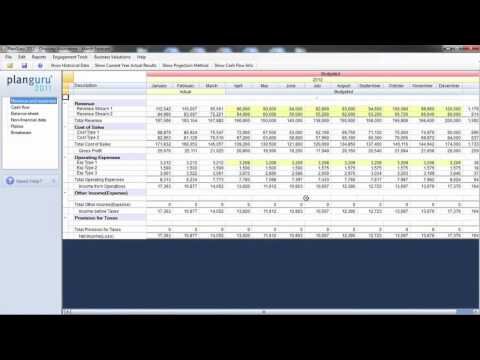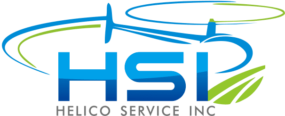Contents:


For example, a category might consist of accounts receivable that is 0–30 days past due and is assigned an uncollectible percentage of 6%. Another category might be 31–60 days past due and is assigned an uncollectible percentage of 15%. All categories of estimated uncollectible amounts are summed to get a total estimated uncollectible balance. That total is reported in Bad Debt Expense and Allowance for Doubtful Accounts, if there is no carryover balance from a prior period. If there is a carryover balance, that must be considered before recording Bad Debt Expense.
But, the direct write off method does not always consider the bad debt in the exact same accounting period. It is expensed only at the time when the business decides that the specific invoice will not be paid and classifies it as uncollectible. This decision may be made at any time and is more often well out of the accounting period of the invoice. Through the direct write-off method, we straightforwardly book a bad debt expense by debiting the bad debt expense account and crediting the accounts receivable account. The first entry will restore the balance in accounts receivable. It seems counterintuitive to restore the balance to pay it off, but for recordkeeping purposes, it is necessary to restore the account balance and show the customer properly paid his debt.
Direct Write Off Method
The company estimates that 1.5% of credit sales are uncollectible. The exact amount of the bad debt expense is known under the direct write-off method, since a specific invoice is being written off, while only an estimate is being charged off under the allowance method. Coca-Cola has several assets that are listed on its balance sheet. Let’s look at what is reported on Coca-Cola’s Form 10-K regarding its accounts receivable. Cash BasisCash Basis Accounting is an accounting method in which all the company’s revenues are accounted for only when there is an actual cash receipt, and all the expenses are recognized when they are paid.
Dependable must reduce Accounts Receivable by $1,400 and record the Bad Debt Expense. The allowance method is the more generally accepted method due to the direct write-off method’s limitations.

What effect does this have on the balances in each account and the net amount of accounts receivable? The balance in Accounts Receivable drops to $9,900 and the balance in Allowance for Doubtful Accounts falls to $400. The estimated amount is debited from the Bad Debts Expense and credited to an Allowance for Doubtful Accounts to maintain balance. The receivable line item in the balance sheet tends to be lower under the allowance method, since a reserve is being netted against the receivable amount.
CUSTOMER SERVICE
And the revenue is also incorrect for the time period when the bad debt was expensed. Is the amount the company expects to collect from accounts receivable. When the firm makes the bad debts adjusting entry, it does not know which specific accounts will become uncollectible. Thus, the company cannot enter credits in either the Accounts Receivable control account or the customers’ accounts receivable subsidiary ledger accounts. If only one or the other were credited, the Accounts Receivable control account balance would not agree with the total of the balances in the accounts receivable subsidiary ledger. Without crediting the Accounts Receivable control account, the allowance account lets the company show that some of its accounts receivable are probably uncollectible.
The Dos and Don’ts of Giving Photography Criticism – PetaPixel
The Dos and Don’ts of Giving Photography Criticism.
Posted: Thu, 16 Mar 2023 16:41:05 GMT [source]
When you file a business tax return, you can write off bad debts from the total taxable income. It is mandatory to use the direct write off method for IRS tax returns and the allowance method is not accurate enough. Write-offs affect both balance sheet and income statement accounts on your financial statement, so it’s important to be accurate when handling bad debt write-offs.
The Difference Between the Direct Write-Off and Allowance Methods
The complications of contra asset accounting only by applying this method which does not allow the creation of prior allowances and provisions. Inevitably some of the amounts due will not be paid and the business will need to have a process in place to record these bad debts. A company that ends the year with bad debt can write that bad debt off on their tax return.
- The amount due is considered as bad debts and treated as an expense in the income statement and written off from accounts receivables in the statement of financial position.
- If the customer paid the bill on September 17, we would reverse the entry from April 7 and then record the payment of the receivable.
- When using an allowance method, it is critical to know what you are calculating.
- There are remote chances of error, considering no calculation of estimates of doubtful debts is required.
- For example, in one accounting period, a company can experience large increases in their receivables account.
The balance sheet aging of receivables method is more complicated than the other two methods, but it tends to produce more accurate results. The method involves a direct write-off to the receivables account. Under the direct write-off method, bad debt expense serves as a direct loss from uncollectibles, which ultimately goes against revenues, lowering your net income. For example, in one accounting period, a company can experience large increases in their receivables account.
Advantages of using the direct write-off method
Fundamentally, like all xero certification for accountants & bookkeepersing principles, bad debt expense allows companies to accurately and completely report their financial position. At some point in time, almost every company will deal with a customer who is unable to pay, and they will need to record a bad debt expense. A significant amount of bad debt expenses can change the way potential investors and company executives view the health of a company. Generally accepted accounting principles or GAAP require that an expense be matched to revenue in the same accounting period. But when bad debt is written off in the direct write off method, it is usually in a different accounting period from the original invoice. So, the loss is not reflected in the revenue for the time period when the invoice was raised.
But, under the https://bookkeeping-reviews.com/, the loss may be recorded in a different accounting period than when the original invoice was posted. The direct write off method is one of two methods to account for bad debts in bookkeeping. The direct write-off method doesn’t adhere to the expense matching principle—an expense must be recognized during the same period that the revenue is brought in. As a result, the direct write-off method violates the generally accepted accounting principles .

The allowance method is more complicated since it requires you to create a provision account which is a contra asset account. The direct write-off method is one of the two commonly known methods of treating bad debt expense. How do you record the sale of inventory to a customer who the credit manager deems will have a 10% chance of paying? The sale occurred December 1st 2015 and has payment due in 60days, so at year end December 31st 2015 the account is not yet due. In the current year, you could credit A/R and debit the account used to record the finance charge income.
B. Prepare the journal entry for the income statement method of bad debt estimation. At the end of an accounting period, the Allowance for Doubtful Accounts reduces the Accounts Receivable to produce Net Accounts Receivable. Note that allowance for doubtful accounts reduces the overall accounts receivable account, not a specific accounts receivable assigned to a customer. Because it is an estimation, it means the exact account that is uncollectible is not yet known. The understanding is that the couple will make payments each month toward the principal borrowed, plus interest. What happens when a loan that was supposed to be paid is not paid?
The allowance method creates bad debt expense before the company knows specifically which customers will not pay. Based on prior history, the company knows the approximate percentage or sales or outstanding receivables that will not be collected. Using those percentages, the company can estimate the amount of bad debt that will occur. That allows us to record the bad debt but since accounts receivable is simply the total of many small balances, each belonging to a customer, we cannot credit Accounts Receivable when this entry is recorded. The method looks at the balance of accounts receivable at the end of the period and assumes that a certain amount will not be collected. Accounts receivable is reported on the balance sheet; thus, it is called the balance sheet method.
Direct write off method vs. the allowance method
If an old debt is paid, the journal entry can simply be reversed and the payment posted to the customer’s account. The direct write-off method lets you charge bad debts directly to an expense such as the Allowance for Bad Debt account used in the journal entries above. By far the easiest write-off method, the direct write-off method should only be used for occasional bad debt write-offs. A company must use either the allowance method or the direct write-off method.
Instead, the allowance method is to be used for the financial statements. Natalie has many customers who purchase goods from her on credit and pay. One of her customers purchased products worth $ 1,500 a year ago, and Natalie still hasn’t been able to collect the payment.
Contra Asset AccountA contra asset account is an asset account with a credit balance related to one of the assets with a debit balance. When we add the balances of these two assets, we will get the net book value or carrying value of the assets having a debit balance. Bottom LineThe bottom line refers to the net earnings or profit a company generates from its business operations in a particular accounting period that appears at the end of the income statement. A company adopts strategies to reduce costs or raise income to improve its bottom line. You may notice that all three methods use the same accounts for the adjusting entry; only the method changes the financial outcome.
